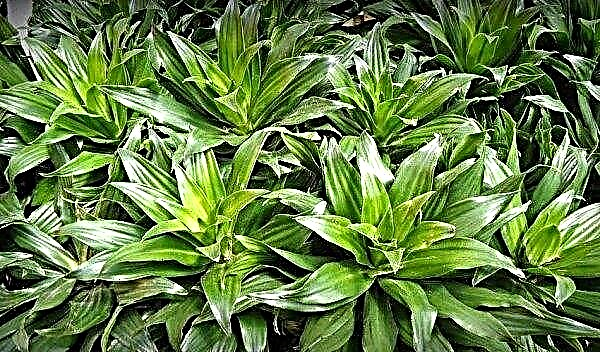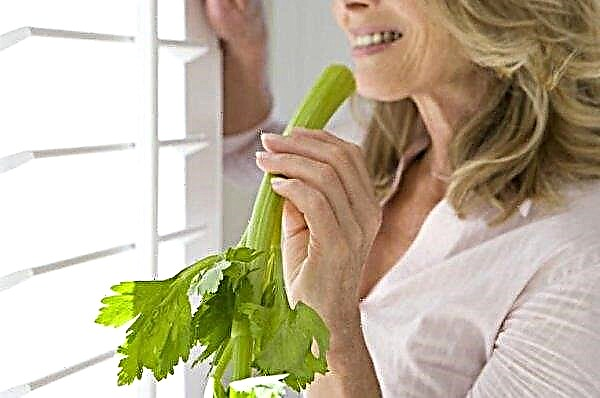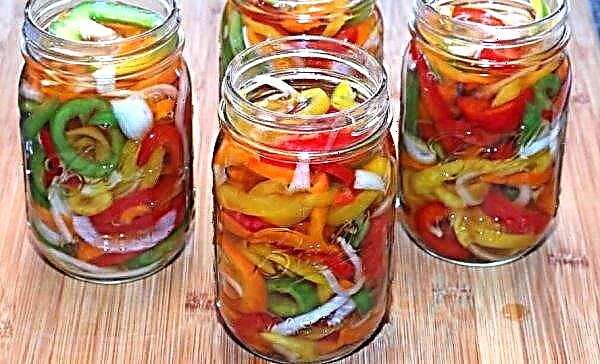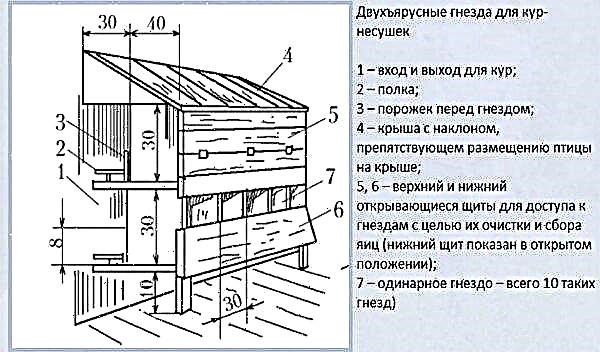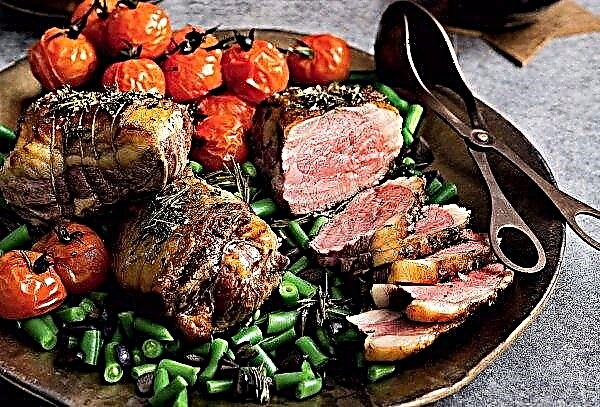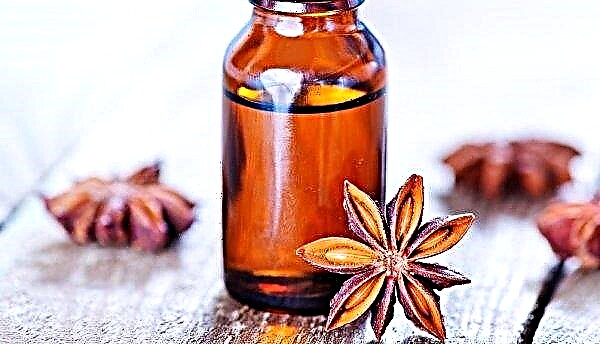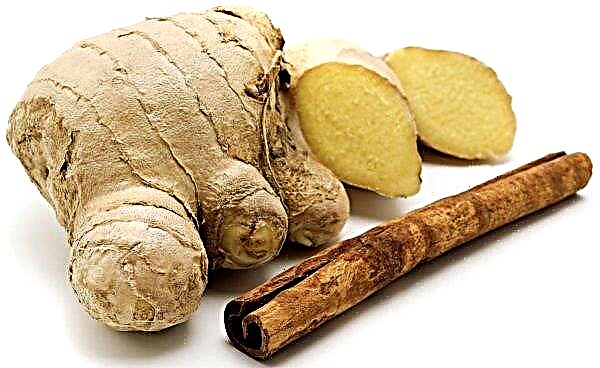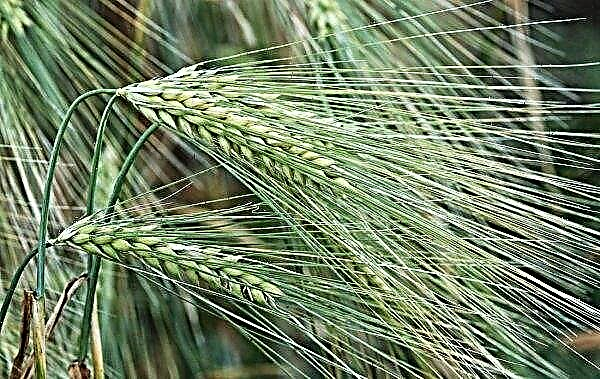Bell pepper, due to the variety of bright colors, unique aroma, pleasant sweet taste and juicy crisp pulp, is great for treating yourself and your loved ones with home preservation or another dish of long-spawned vegetables in winter. This review provides the most popular and little-known, but very original ways to extend the season of eating this wonderful vegetable all year round.
How to choose and prepare bell peppers
Each procurement method has its own rules for the selection of raw materials, but there are universal requirements.
So, any housewife should know that:
- The best time for winter harvesting begins in the midst of fruiting appropriate seasonal vegetable and can last almost until the very end of this period. The last fruits removed from the bush before it is removed from the bed are not always suitable for preservation, freezing or drying, as they are often not fully ripe, they may have traces of freezing or damage from diseases and pests that managed to attack the plant during the season. However, early fruits are an even worse choice. Such vegetables usually contain a minimal amount of nutrients. We are talking about varieties specially bred for accelerated ripening, in such an accelerated mode, the fruit simply does not have time to take everything that it is supposed from the soil. To meet the deficiency of vitamins in early summer, this option is suitable, but only vegetables and fruits that have gone through a full development cycle should be harvested.
- Bell peppers can be seen on sale all year round, however, it only makes sense to use seasonal fruits for harvesting domestic production. Crops arrived from distant sunny countries were very likely to ripen after removal from the bush, which significantly reduces the quality of such a vegetable, in addition, long transportation is associated with an increased risk of spoilage, therefore, as a rule, products undergo additional chemical processing before such a procedure, not adding them utility.
- An ideal raw material for harvesting is a crop grown in its own garden, because only in this case you can be completely sure that when growing fruits, growth stimulants, pesticides and other dangerous substances were not used. Those who are not engaged in the cultivation of their vegetables can only be advised to purchase products from trusted sellers, if possible, acquiring acquaintances among peasants or summer residents.
Did you know? Bell pepper is a champion in the content of vitamin C among other vegetables and fruits. Ascorbic acid in it is much more than in currants or citrus fruits.
- When purchasing bell pepper, it should be carefully examined. A properly grown, ripened, but not overripe fruit, must be uniformly colored, dense and resilient, have a bright color, a nice glossy shine and a green, not dried stalk. Cracks and other injuries on the fruits are not allowed, because it is through them that the pathogenic microflora quickly penetrates into the vegetable. Also, do not buy wet, shriveled or withered fruits.
- Regardless of the variety, the taste of bell pepper should be sweet. If bitterness is felt when cracking the pulp, this means that the fruit has not reached technical maturity or was grown in violation of technology.
- Fruits picked in green (another distinctive feature is uneven coloring) can easily ripen at home., for this, it is enough just to leave them for several days in a darkened room at room temperature. But it’s better not to use such vegetables for harvesting, because they have fewer nutrients and aroma than those that matured in the garden.
- Concentration of hazardous nitratesthat accumulate in vegetables due to the abuse of nitrogen fertilizers to stimulate plant growth, in fruits grown in greenhouses is always higher than in fruits grown in open ground with the same content of nitrogen derivatives in the soil.
Regardless of which method of harvesting the pepper will be used, removed from the beds or acquired fruits must be thoroughly washed under running water and then completely dried at room temperature. For this purpose, it is best to lay the whole pepper on a water-absorbing material and leave it to lie for several hours. Any harvesting requires mandatory removal of the stalk and seeds (in Bulgarian pepper, unlike bitter pepper, seeds are inedible), however, the methods for carrying out this procedure depend on whether the fruits are harvested whole or in sliced form.
Any harvesting requires mandatory removal of the stalk and seeds (in Bulgarian pepper, unlike bitter pepper, seeds are inedible), however, the methods for carrying out this procedure depend on whether the fruits are harvested whole or in sliced form.
The best recipes for preparing sweet pepper for the winter
The most popular way by which you can prepare bell peppers for the winter is, of course, conservation. There are many recipes for making spins from this popular vegetable. Below are four options for dishes that differ not only in taste, but also in technology that provides the product with preservation, that is, preservation for a long time.
Canned Bell Peppers

The “highlight” of this recipe is the absence of vinegar in it. In this case, honey and mustard act as preservatives.
Important! Clove has a very bright and rich aroma, which can very easily spoil the impression of the dish. Use this spice very carefully and in very small quantities.
For the recipe, it is better to use thick-walled varieties of pepper, but the color does not matter much.
3 cans of 0.5 L each
vegetable oil
1 cup
- Put the prepared peppers whole (without preliminary cleaning) on a baking sheet covered with parchment paper and bake until cooked. In the process of baking, make sure that the fruits are not burnt and, if necessary, turn them over. At a temperature of + 200 ° C, the process will take about 15 minutes. Ready pepper will become soft, and the peel on it will slightly swell.
- Transfer fruits to a plastic bag or wrap in food foil and leave for half an hour until cool. Such an artificial “steam room” will make it easier to peel the fruit from the skin.
- Remove the peel from the peppers, remove the stalk and the inside with the seeds.
- Cut the flesh into small strips.
- In a heated pan with thick walls or a cauldron, pour vegetable oil, then put all the other ingredients there, except pepper, mix well and warm.
- Very carefully add pepper to the marinade, cover and simmer over low heat for 10 minutes from the moment of boiling.
- Fill the sterilized jars with an appetizer, place them in a pan with hot water, on the bottom of which a piece of gauze or a kitchen towel is pre-bedded, cover the pan with a lid and simmer for 15 minutes over low heat.
- Remove the cans from boiling water, cover, tighten, place the lids down on a clean towel and, making sure that the cork is tight, leave it to cool completely in a place protected from draft.
Important! Sterilization is a prerequisite in this recipe, because due to the absence of vinegar in the composition of the snack, the likelihood of undesirable biological processes developing inside the jars increases sharply.
Marinated

This appetizer looks especially impressive if you use peppers of different colors in its preparation - green, red, yellow, orange.
It is best to use pineapple varieties, they are the most fleshy.
3 cans of 0.5 L each
vegetable oil
200 ml
- Cut the pepper in half lengthwise, remove the stem and core with seeds.
- Divide each half lengthwise into 2 parts (if the fruits are very large, 3 petals can be made, however, it is important that the fragments are large).
- Dip the chopped pepper in boiling water and boil for 2-3 minutes (it is important that the flesh remains crispy, in no case should the vegetable be boiled).
- Prepare the marinade by mixing all the ingredients and bringing the mixture to a boil.
- Arrange the peppers in sterilized jars so that the colored parts fall into each.
- Fill the containers with marinade almost to the top.
- Sterilize jars in boiling water under a lid for 15 minutes.
- After taking the container out of boiling water, immediately roll up the lids, turn over, make sure that it is tight and leave to cool.


